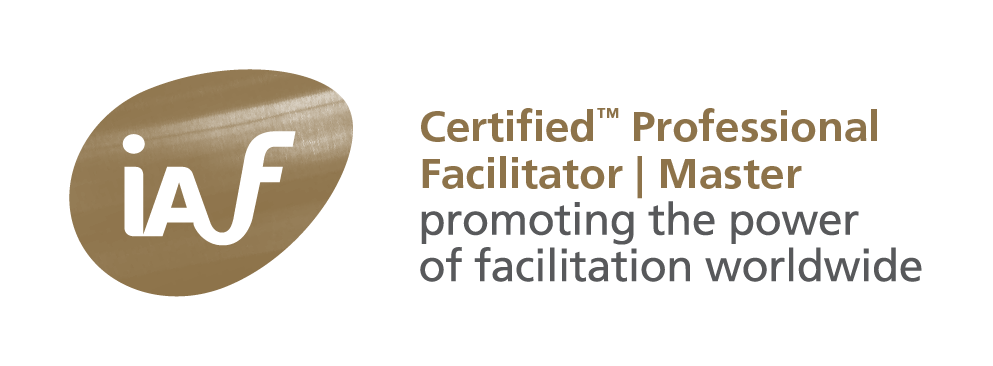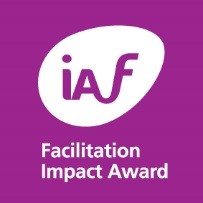Recently I was asked:
“What evidence can I produce to answer the challenge of the CEO, community leader, politician, etc. who questions the value of taking a participatory approach at all, who sees it only as a more expensive, more time and people consuming effort to come up with a solution which maybe they can come up with in a fraction of the time? Do I have evidence that such an approach will not only make people feel good, but lead to e.g. higher levels of efficiency, effectiveness, higher rates of implementation of plans, etc.? Can I only tell stories, or can I produce data?” – J.D.
 I wrote, that facilitation belongs to a class of irrational modes of change, and not to the classical, analytical modes. The impact cannot be measured in the classical way, like in physics. There are however several other ways to measure impact of facilitation.
I wrote, that facilitation belongs to a class of irrational modes of change, and not to the classical, analytical modes. The impact cannot be measured in the classical way, like in physics. There are however several other ways to measure impact of facilitation.
1. Operational closed. Human beings and groups belong to a class of what Maturana and Varela have named autopoietic systems. They are self-referential, “operationally closed” and cannot know how they work. They themselves can measure the impact of facilitation and answer what made it so for them.
2. Quality by default unmeasurable. Quality cannot be measured quantitatively, that’s why we have to use words like “quality” and “quantity”. And even a quantity can depend on the circumstance: the weight of a stone on the moon is less then its weight on earth. (The mass isn’t). Quality is about the way (‘qua”) you relate (“li”) to the quantities. The quantity of a diamond stone is expressed in weight, and its quality is in the wedding ring. So also look at the behavior of a group at a facilitated session, for instance the interactions during the meeting and their reluctance to leave.
3. “prétentieux, moi?” Communication is part of the problem: what does your client mean by “challenge”? Is the challenge to solve a problem or an issue? Is the challenge to be understood? Or to be meaningful? Is the challenge a next election, a promotion or is the challenge supporting others to perform (and thus gain a promotion)? What if a participatory meeting is the challenge, and the client assumes that (s)he should lead such a meeting.
As a facilitator, you’re in a double bind, because you cannot ask these questions without a change to loose your customer. So always ask participants at the beginning of a meeting, what they think a challenging result will be for them! In 9 out of 10 cases, it will be more challenging then the client expected.
4. Attribution of success. People – and this includes me -, assume that their success is a result of their own intentions and actions and their failure a consequence of external causes, while the success of somebody else is due to circumstance and luck and their failure a results from wrong intentions and actions. This is a psychological law. William James formulated it like: Self-image equals success divided by pretensions. So let the participants create a high level of self-image.
Act, look, feel successful, conduct yourself accordingly, and you will be amazed at the positive results.
5. Stories are data too. Numbers are a quantified expression of an opinion. Physicist tell stories, they call it “Gedanken Experiment“, so it sounds better. They adapt their stories to the measurements too and then flip the class room. In our book “Diverging Conversations on Facilitation” every story starts with an actual quote by a client of one of the 24 facilitators who wrote a case story. Let people share the stories about your sessions.
6. Work towards an attainable goal. Andrea Zittel wrote a list of things she knows for sure. On number 14 we find:
14. People are most happy when they are moving towards something not quite yet attained
So always create a session with concrete, attainable goals and end a session on a conversation on the attainability of the new goals and how we can support each other in reaching them.
7. Meaningful life. Human beings need and want to be meaningful. The client as well as the participants need or want to be meaningful. This can be done (1) through actually working together, (2) Through experiencing something or meeting somebody and (3) – this is the difficult part – the acceptance of suffering. We have a tendency to avoid suffering, or worse, inflict it on others. But if something is easy, it isn’t worth it.
Bonus. There are qualified qualitative methods to measure the impact of facilitation. Only nobody wants to employ them and facilitators don’t understand this. Here is an example:
- Ask participants at the end of a meeting an open question: “What did you experience during this workshop?”
- List the answers (“I felt involved”, “interesting technique”, “I didn’t understand the question”, “good coffee”, …. ) .
- Then ask them all to say which of the answers they don’t agree with. If all agree: use the answer. If over 10 – 15% of the participants don’t agree with an answer, eliminate it.
- Then, afterwards, “code” the answers. (“opening”, “dealing with resistance”, “concrete results”, “space”, “method”, ….).
- Do this in a series of sessions and publish the results, including the original answers and the coding used.




